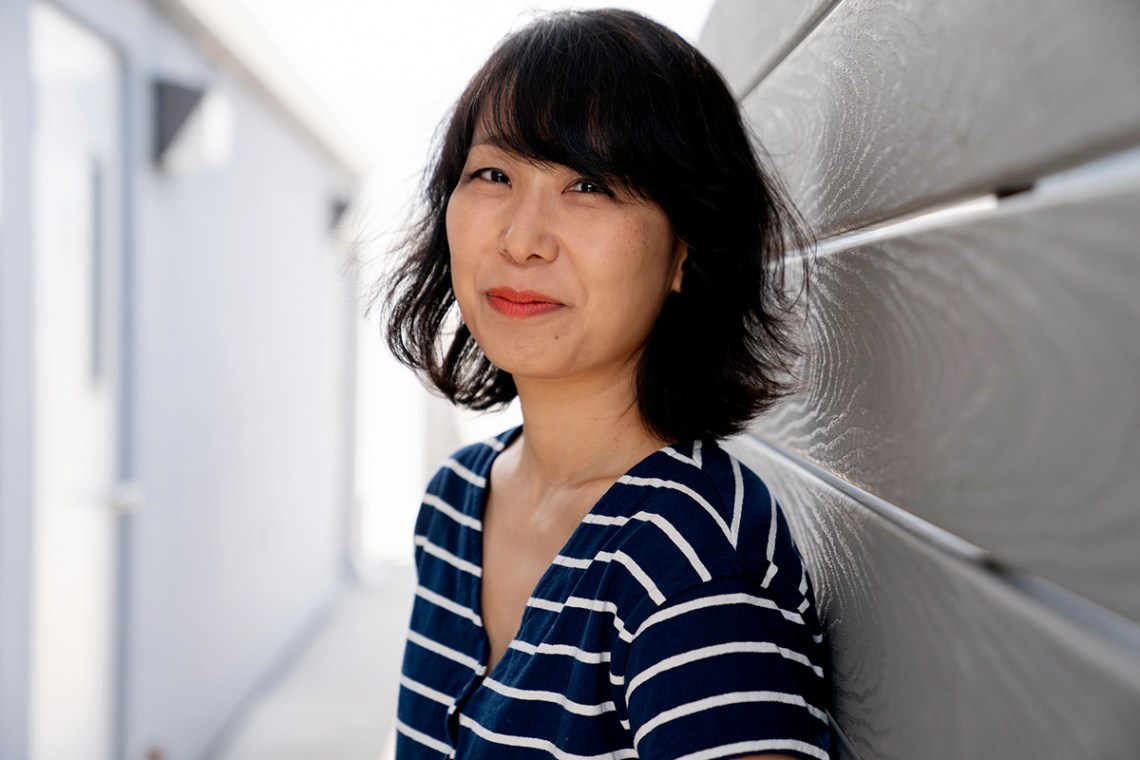This article is part of a regular series of conversations with the Review’s contributors; read past ones here and sign up for our e-mail newsletter to get them delivered to your inbox each week.
In the May 26, 2022, issue of the magazine, E. Tammy Kim reviews The Interrogation Rooms of the Korean War, a new history of the war drawn from case files from American prisoner of war camps that have recently been declassified after decades in government archives. Included in these documents are photographs and transcripts of interrogations that “help us understand the Korean War as an intimate civil conflict, not just a proxy battle between superpowers.”
Kim, a former attorney, has developed a formidable reporting beat. Since 2018 she has written regularly for the Review on Korean politics and literature as well as labor and grassroots organizing in the US. She is also a contributing writer at The New Yorker and cohosts a podcast about Asian America, Time to Say Goodbye.
This week, we corresponded by e-mail about reporting history, remembering the “forgotten war,” and how personal experience comes into political writing.
Lauren Kane: Your review has a personal element to it—you begin with an anecdote about traveling in South Korea. What had brought you to the country at that time? Was the experience of reading The Interrogation Rooms a personal one?
E. Tammy Kim: Since 2018, though not during the worst of the pandemic, I’ve had the great luck of making periodic reporting trips to South Korea. I returned for three months this past winter to work on a long-term project about the US–South Korea military relationship, as told in part through my own family’s history. Like many Korean Americans around my age, just one generation removed from armed conflict, I find it necessary but emotionally trying to read about the Korean War. Some portions of Monica Kim’s book felt like they could have been told by my relatives.
Were there aspects of the book you would have liked to discuss in the review if there had been more space?
I’m fascinated by how India approached the Korean War, and by the parallels between the partition of India and Pakistan, in 1947, and the division of the two Koreas, in 1945 and, more radically, in 1953. Nehru wanted to remain neutral during the Korean War; only under pressure from the United Nations did he agree to send Indian medics to the battlefront. For him, the Koreas were a test case for the rest of Asia and what we now refer to as the Global South: Would the superpowers carve up the world however they liked, or could some limits be placed on their border play?
As the Korean War dragged on, mostly because the parties disagreed on what to do with hundreds of thousands of POWs, Nehru and his top general, Kodandera Subayya Thimayya, came up with a solution. The US had flouted international law by refusing to let POWs return to their countries of origin. (Truman hoped that many Communist prisoners might be converted to the Western capitalist cause and choose to go to South Korea or Taiwan, as opposed to North Korea or mainland China, after the war ended.) The Indian compromise offered POWs a third choice: to be settled in India or another neutral country. It was India’s way of respecting the sovereignty of North Korea and China—and the Soviet sphere—without grossly offending the United States.
Why is this an important history for Americans to read?
The clichéd nickname for the Korean War is “the forgotten war,” which speaks to its place in American memory. Nearly two million US troops served in that war and more than thirty thousand died. Millions of Koreans, mostly civilians, were killed in what was an exceedingly brutal air campaign. But even for people uninterested in Asia, this history is essential. As arguably the first hot war of the cold war, Korea was a proving ground for the US military and America’s sphere of influence. Today, thirty thousand US troops and thousands of ancillary civilian personnel are stationed in South Korea, and there are hundreds of similar installations all over the world. Many scholars consider Korea to be the first of America’s “forever wars.”
Reporting is often about getting at big ideas and issues by way of individual experience. Archives like the ones in this book are similarly intimate primary sources. As a reporter, what do you value about storytelling from the perspective of the individual? What are some of its challenges?
I’m trying to learn how to tell big stories through little stories. An immersive profile, like a personnel archive, soaks up odd, tender, disquieting details. Good reporters know how to balance these idiosyncrasies against a larger, critical narrative. In labor journalism, for example, it would be a mistake to focus solely on individuals, on the one hand, or economic structures, on the other. Doing so would turn every worker into an angel and every employer into a devil—a myopic and boring result. There has to be the right mix of personal experience and critique; narrative and social context. I hope to get better at this.
Advertisement
Do you approach your different journalistic beats in different ways, or are there practices or philosophies that you hold to no matter what?
I wish that I had a steady, confident strategy for every kind of piece, but I’m still learning the terrain of features, essays, and criticism. One thing I almost always do, across genres and subjects, is go places and call people. I weave reporting into most of my stories, even personal essays and arts reviews. It’s a way to test my arguments, to verify the truth of what I think I see.



